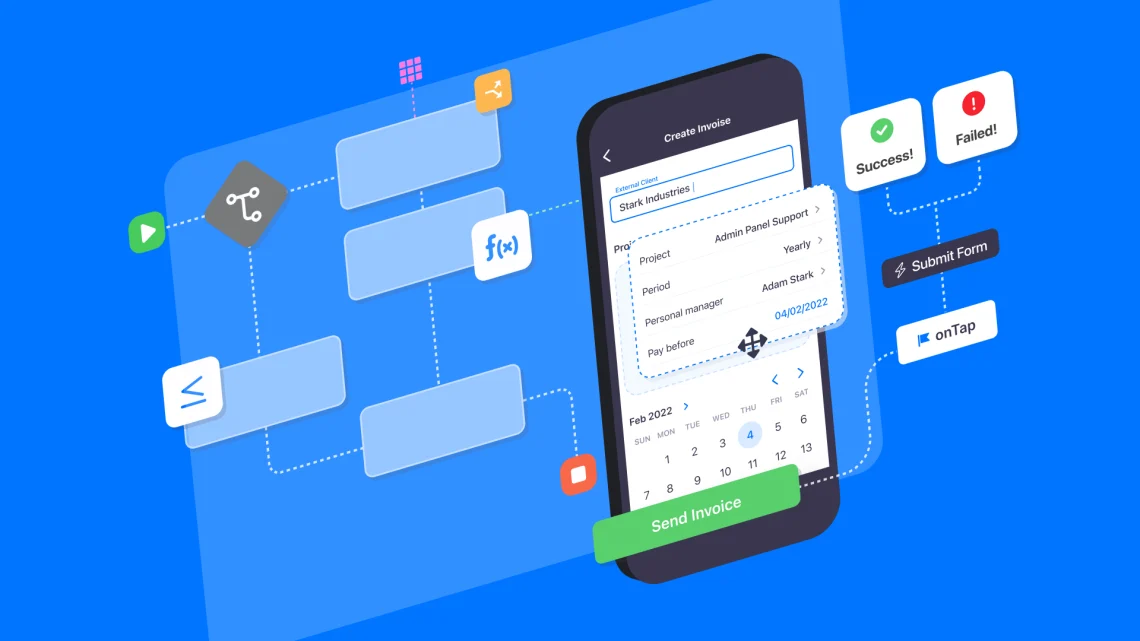Introduction
In today’s digital era, mobile apps have become an integral part of our lives, serving various purposes from entertainment to productivity. However, developing a mobile app traditionally can be a complex and time-consuming process, often requiring specialized programming skills and extensive development resources. This is where Low code Application development comes into play, offering a simplified approach to creating mobile apps with minimal coding efforts. In this article, we will explore the concept of low-code development and how it revolutionizes the app development landscape.
Understanding Low-Code Development
Low-code development refers to a visual, drag-and-drop approach to app development that minimizes the need for manual coding. Instead of writing lines of code from scratch, developers can leverage pre-built components, templates, and workflows to rapidly assemble mobile apps. Low-code platforms provide an intuitive interface that allows users to design, configure, and deploy apps with relative ease. By abstracting complex technical details, low-code development empowers both professional developers and citizen developers to contribute to the app creation process.
One of the primary advantages of low-code development is its ability to accelerate the app development lifecycle. With traditional methods, creating an app from scratch can take weeks or even months. Low-code platforms, on the other hand, enable developers to build functional prototypes and deploy minimum viable products (MVPs) within days. This speed-to-market advantage allows businesses to iterate quickly, gather user feedback, and make improvements on the fly.
Exploring Low-Code App Development Tools
A wide range of low-code platforms are available in the market, each offering its own set of features and capabilities. Let’s take a closer look at some popular low-code platforms and compare their strengths and weaknesses.
Platform A: Features and Capabilities
- Overview of Platform A’s visual development environment
- Drag-and-drop interface for building app layouts
- Integration with external services and databases
- Support for custom code and extensions
Platform B: Features and Capabilities
- Key features of Platform B’s low-code framework
- Configurable app logic and business rules
- Seamless integration with popular cloud services
- Mobile app testing and debugging tools
Platform C: Features and Capabilities
- Unique selling points of Platform C’s low-code solution
- Advanced customization options for app interfaces
- Extensive library of pre-built connectors and APIs
- Scalability and performance optimization features
Comparative analysis of different low-code platforms:
- Ease of use and user interface
- Assessing the intuitiveness of the platform’s visual development environment
- Examining the learning curve for beginners and experienced developers
- Customization options
- Analyzing the flexibility of the platform in terms of UI/UX customization
- Evaluating the ability to tailor app behavior and workflows
- Integration capabilities
- Reviewing the platform’s support for connecting with external services and databases
- Assessing the availability of pre-built connectors for popular APIs
- Scalability and performance
- Investigating the platform’s ability to handle increased user load and data volume
- Assessing performance optimization features such as caching and load balancing
Step-by-Step Guide to Mobile App Development with Low Code
To help you understand the low-code development process, let’s walk through a step-by-step guide for creating a mobile app using a low-code platform:
Requirement Gathering and Planning
- Defining app objectives and target audience
- Clearly outlining the purpose and goals of the app
- Identifying the primary user base and their specific needs
- Identifying key features and functionalities
- Listing the core functionalities the app should provide
- Prioritizing features based on user requirements and business goals
Designing the User Interface
- Drag-and-drop interface design tools
- Exploring the visual design capabilities of the low-code platform
- Arranging UI components using an intuitive drag-and-drop interface
- Creating visually appealing app layouts
- Customizing colors, fonts, and styles to match the brand identity
- Designing user-friendly and intuitive navigation flows
Configuring App Logic and Workflows
- Defining app behavior and data flow
- Configuring screens, forms, and navigation paths
- Establishing data models and relationships
- Implementing business rules and validations
- Defining logic to enforce data integrity and ensure proper app behavior
- Creating workflows and automating processes using visual tools
Integrating External Services and APIs
- Connecting with databases and cloud services
- Utilizing the low-code platform’s built-in integration capabilities
- Configuring connections to external data sources for real-time data retrieval
- Utilizing pre-built connectors for popular services
- Exploring the platform’s library of connectors for services like payment gateways, social media platforms, etc.
- Integrating third-party APIs for additional functionality
Testing and Debugging the App
- Ensuring app functionality and usability
- Conducting thorough testing to identify and fix any issues or bugs
- Verifying that the app performs as expected across different devices and screen sizes
- Identifying and resolving bugs and issues
- Utilizing debugging tools and error logs to pinpoint and resolve problems
- Conducting user acceptance testing to gather feedback and make necessary improvements
Deploying and Publishing the App
- Generating app binaries for different platforms
- Exporting the app for iOS, Android, or other target platforms
- Ensuring compatibility with the respective app store guidelines and requirements
- Submitting the app to app stores
- Following the submission process of the app stores (e.g., Apple App Store, Google Play Store)
- Adhering to app store guidelines and requirements for a successful submission
Overcoming Limitations of Low-Code Development
While low-code development offers numerous benefits, it may not address every app development scenario. Here are some ways to overcome the limitations of low-code development:
Addressing Complex App Requirements
- Extending low-code platforms with custom code
- Leveraging the platform’s extensibility options to write custom code when necessary
- Integrating with existing systems or complex business processes using custom code
- Leveraging plugins and extensions
- Exploring the availability of plugins and extensions to augment the platform’s functionality
- Utilizing community-created components and modules for added flexibility
Ensuring App Performance and Scalability
- Optimizing code and database queries
- Fine-tuning the app’s code and queries for improved performance
- Implementing caching mechanisms to reduce data retrieval latency
- Utilizing caching and load balancing techniques
- Leveraging caching technologies to store frequently accessed data
- Implementing load balancing to distribute user requests efficiently
Real-World Examples of Successful Low-Code Mobile Apps
To illustrate the effectiveness of low-code development, let’s examine two real-world case studies showcasing successful low-code mobile apps:
Case Study 1: App X – Streamlining Field Service Operations
- Overview of the app’s features and impact
- Discussing how App X improved field service efficiency and customer satisfaction
- Highlighting the key functionalities that set it apart from traditional solutions
- How low-code development accelerated the project
- Exploring how the low-code platform enabled rapid prototyping and iteration
- Discussing the time and cost savings achieved through low-code development
Case Study 2: App Y – Enhancing Customer Engagement
- Key functionalities and user experience
- Describing the unique features of App Y that facilitated better customer engagement
- Discussing the app’s intuitive user interface and personalized experiences
- Benefits of low-code in rapid app delivery
- Explaining how low-code development allowed for quick updates and feature additions
- Highlighting the positive impact on customer satisfaction and business growth
Future Trends in Low-Code Mobile App Development
The low-code development space continues to evolve, with several exciting trends shaping the future of mobile app development:
Advancements in Low-Code Platforms and Tooling
- Predictive modeling and automation to further streamline app development
- Integration with emerging technologies like blockchain, augmented reality (AR), and Internet of Things (IoT)
Integration of Artificial Intelligence and Machine Learning
- Incorporating AI and ML capabilities into low-code platforms for intelligent app development
- Enabling natural language processing, image recognition, and predictive analytics within apps
Growing Adoption and Market Projections
- Analyzing the increasing adoption of low-code development across industries
- Projecting future market growth and the impact on traditional development methodologies
Conclusion
Low-code development has revolutionized the way mobile apps are created, providing a simplified approach that empowers both professional developers and citizen developers. With its visual, drag-and-drop interface and rapid prototyping capabilities, low-code platforms make app development more accessible and efficient. By following the step-by-step guide outlined in this article, businesses can leverage low-code development to create feature-rich mobile apps in less time and at a reduced cost. As the low-code landscape continues to evolve and advance, it holds immense potential for the future of app development, enabling faster innovation and empowering businesses to deliver exceptional user experiences.





